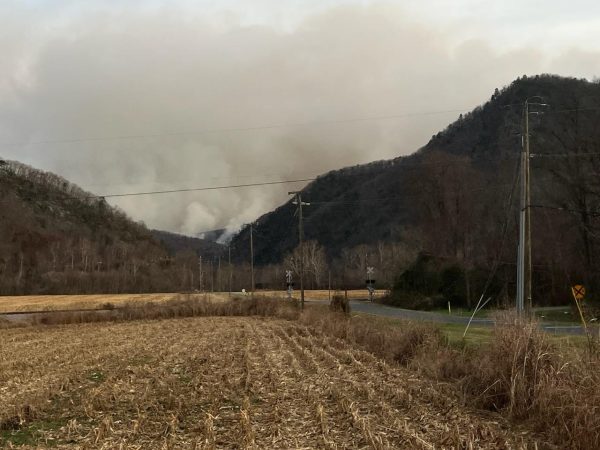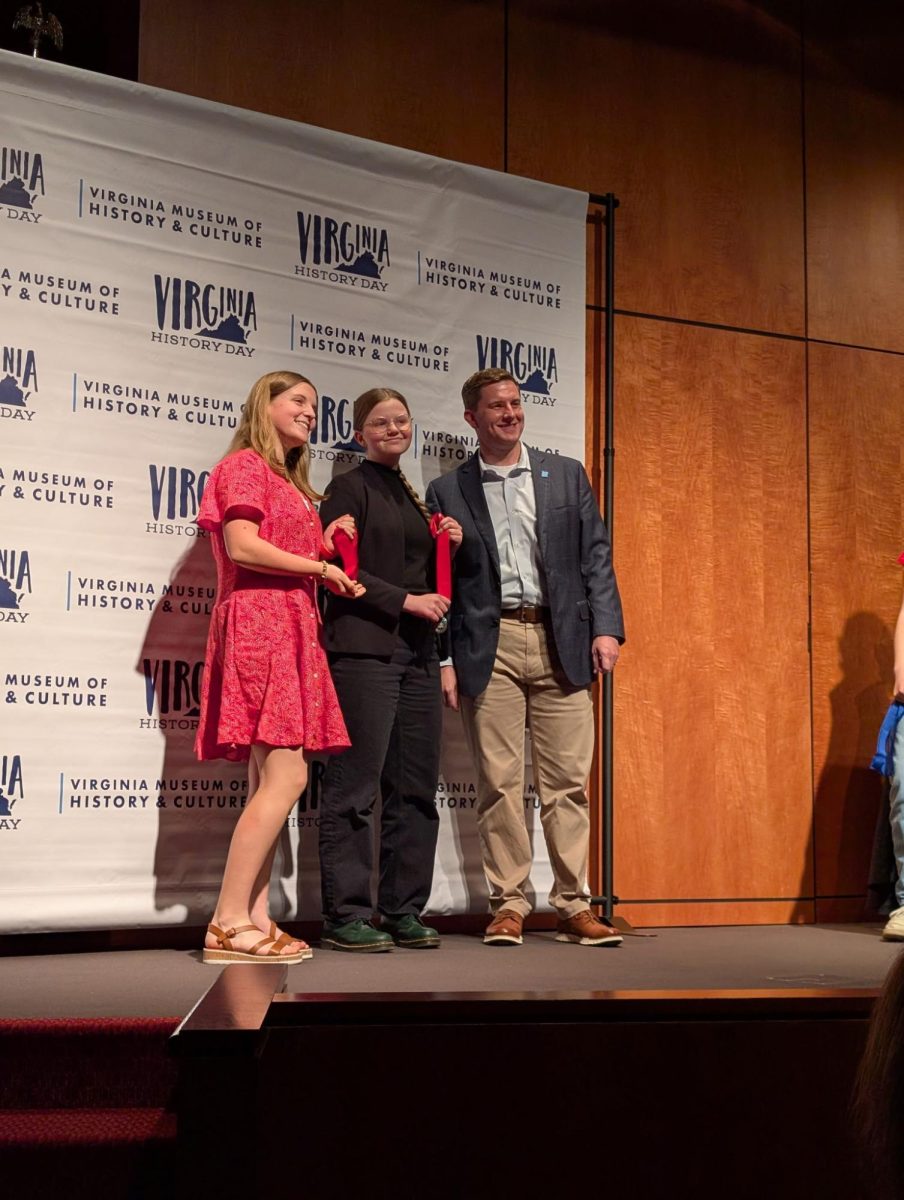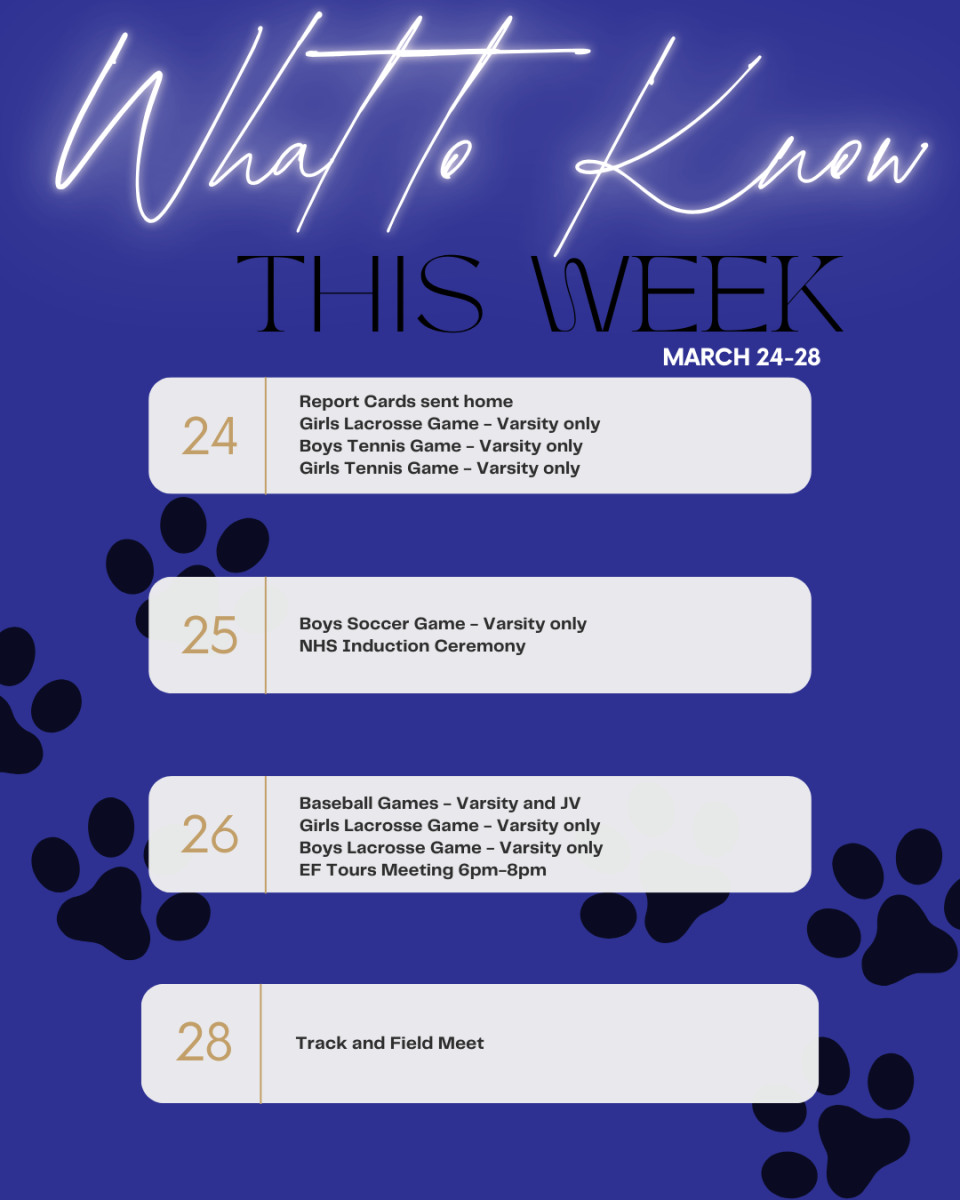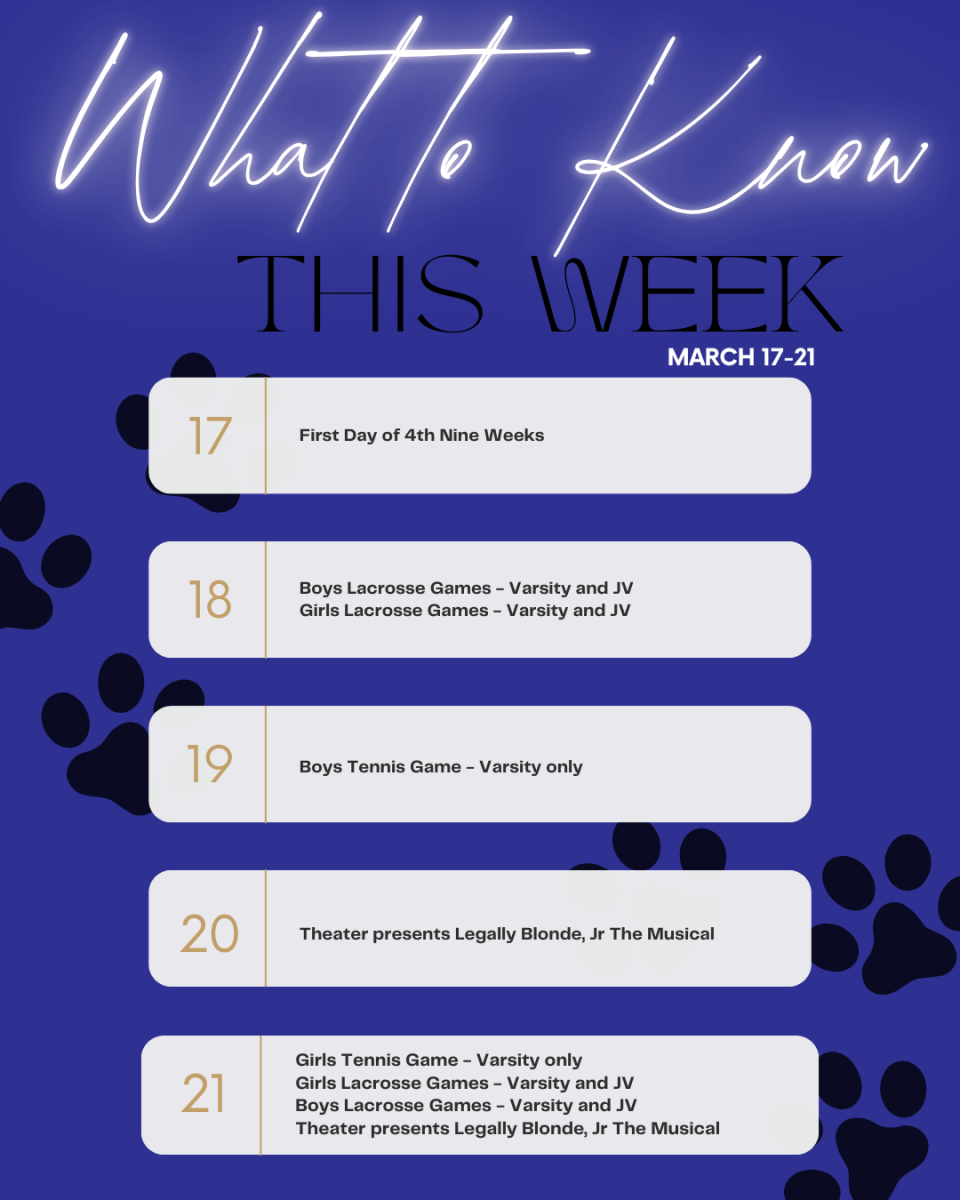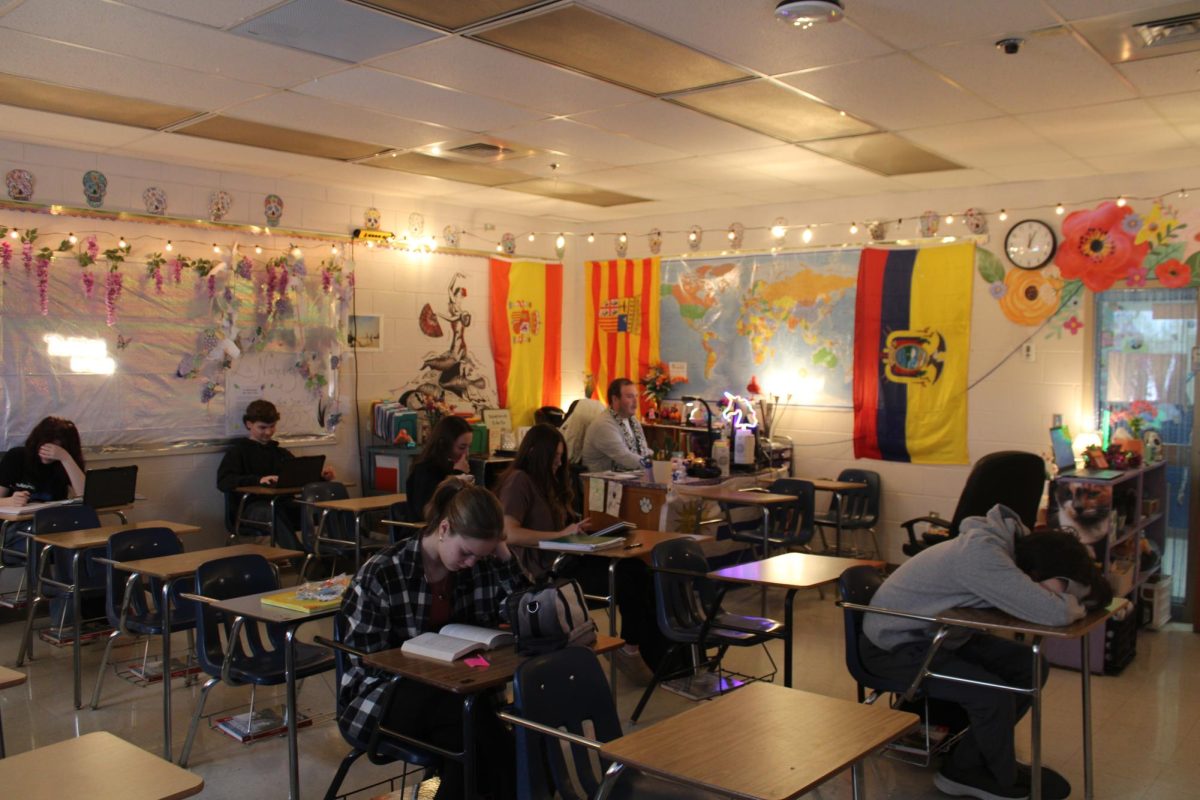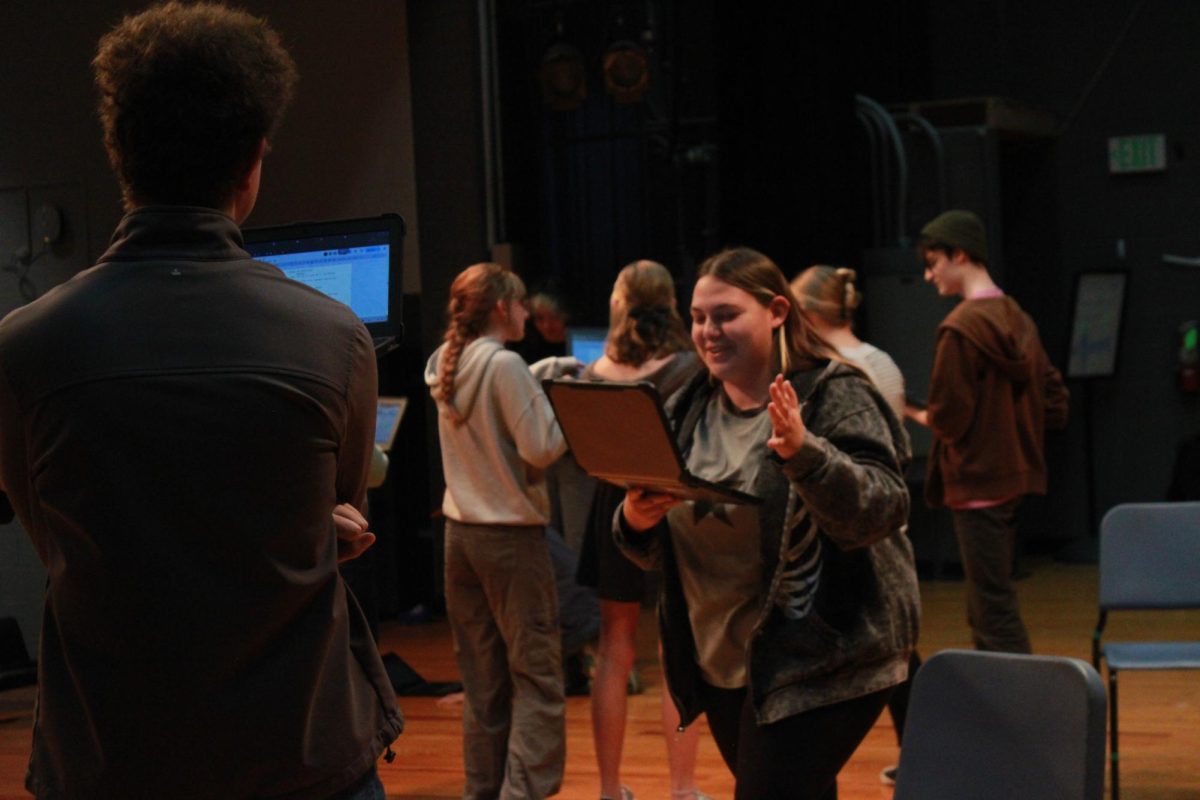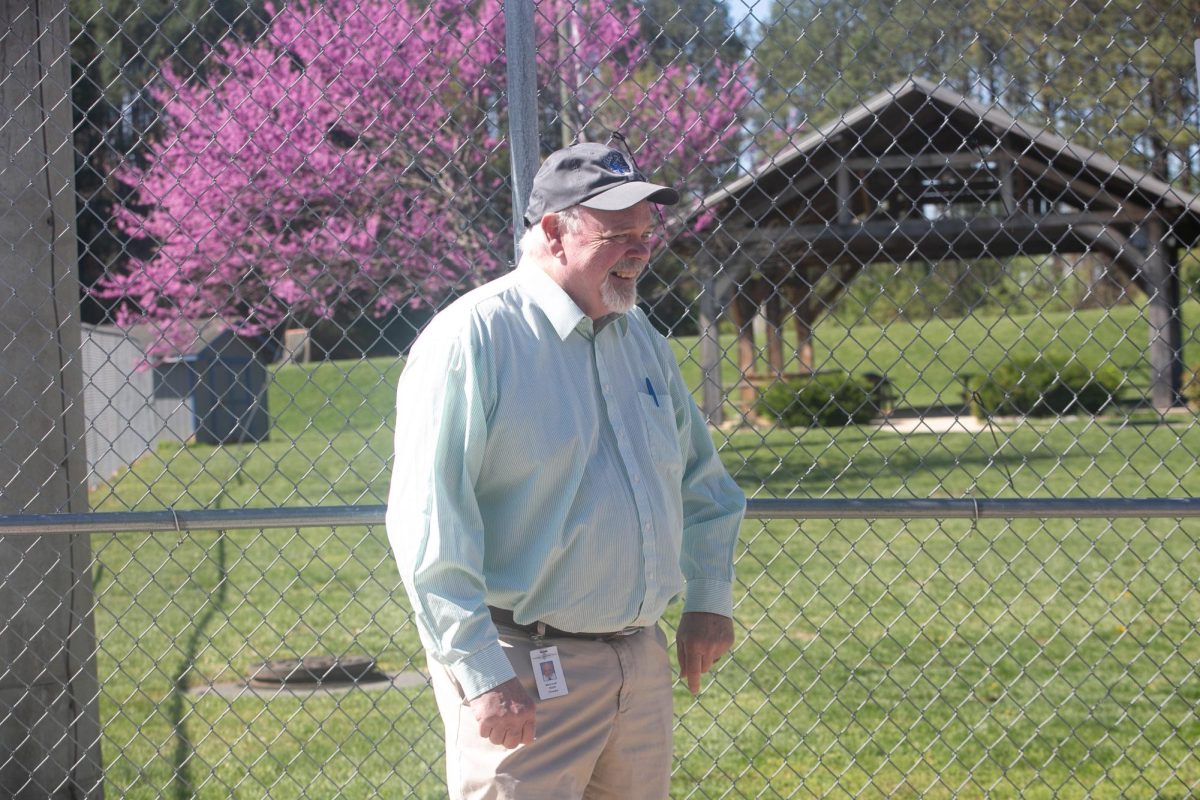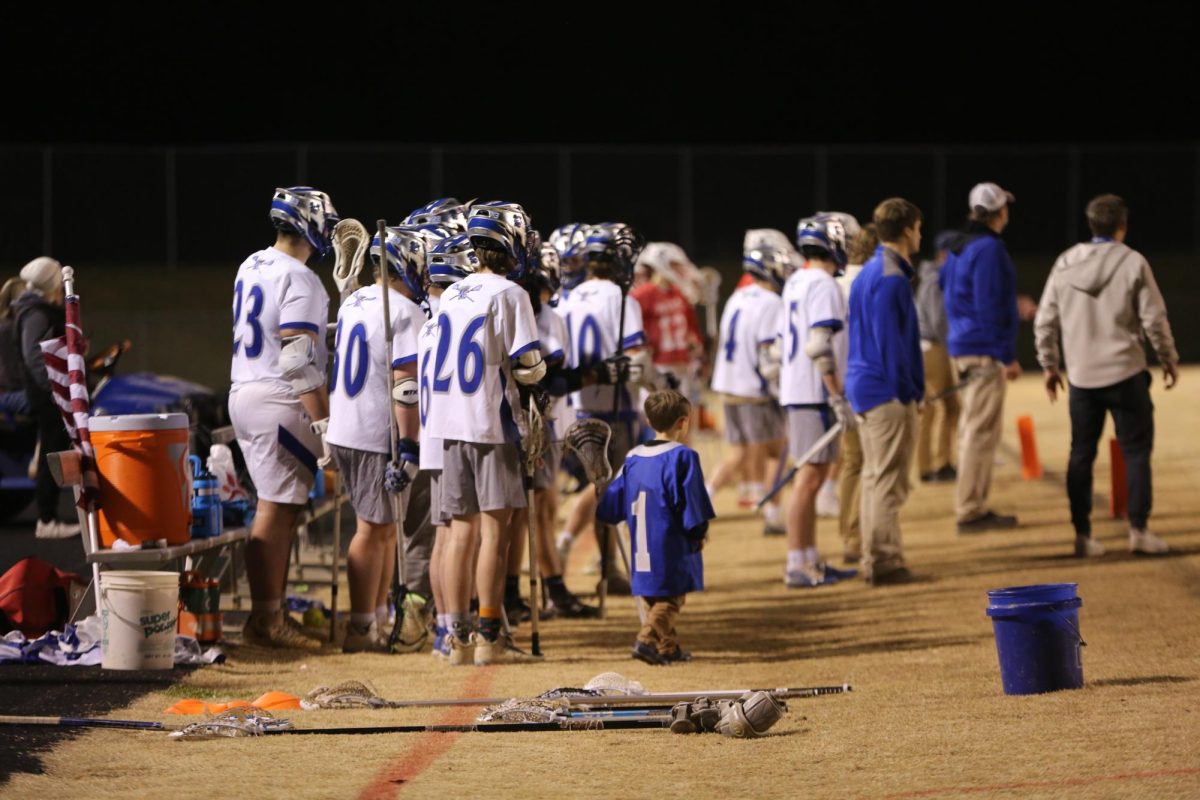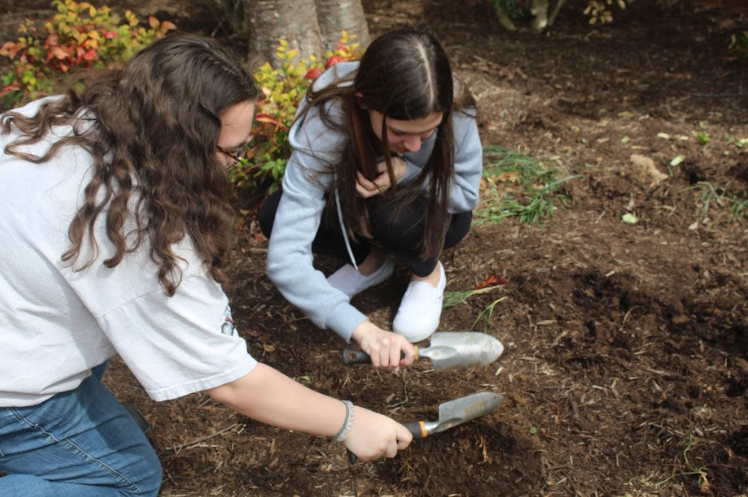On Nov. 12, a blaze sparked George Washington Jefferson National forest that took over two weeks to put out. It burned over 11,000 acres of land. On Monday Nov. 27 professionals were able to contain it (wfxrtv.com). The fire was contained within the George Washington Jefferson National Forest in Bedford and Rockbridge County. Since the fire was contained within the bounds of a forest, there was no threat to property or personal safety.
While the cause of the forest fire is unknown, Earth Science teacher, Ms. Sarah Armstrong, believes that it was caused by humans; most likely from a cigarette butt or an improperly extinguished fire.
“The fire spread rapidly for a few reasons, the first being the extreme drought conditions we have been experiencing in our region since late summer,” said Armstrong.
The conditions were optimal for a widespread forest fire, because of the minimal rainfall in the area.
“Because the fire started in a temperate deciduous forest it had plenty of fuel to burn with the newly fallen leaves. Wind played another important role. From the start, the wind gusts were in the 20 mph range and shifted multiple times during the day making it difficult to predict which direction the fire would move next. Topography was another factor in the rapid spread, the mountainous terrain made it difficult to access for firefighters,” said Armstong.
Caren Miranda-Gleason, public information officer for the U.S. Forest Service (USFS), has been working for USFS for over 30 years.
She describes the back-fire technique that firefighters used to contain the fire, which is when they intentionally set fires on mountain slopes surrounding the fire to burn away its fuel. Firefighters were also able to get immediate emergency access to use of machinery (ie. bulldozers and aircraft), which isn’t typically permitted. They used natural and man-made barriers and firlines (trenches that are dug to contain fires) to control the fire as well.
“Forest fires need heat, air, and fuel to burn. The area where it burned, the James River wilderness, is very thick with timber and vegetation, so there was a lot to burn. When there is a steep slope, the fire heats up the area uphill, which allows it to dry up and become easier to burn,” said Gleason. “It was not very accessible, so it took firefighters an hour and a half the first day to hike to the wildfire, since it was so deep in the wilderness. The steep terrain, limited accessibility, dry conditions, and wind all caused this fire to spread beyond what could be contained quickly.”
On the first day of the fire, firefighters performed what is known as a ‘size-up’, which is how they estimate the potential danger a fire could cause and what damage it has already done to the area. They estimated the fire to have spread 30-50 acres, or football fields, within the first day. After they completed the size-up, they knew it would take much longer to put out than the typical 2-3 days it takes to extinguish the fire.
Soon after the fire began, local fire departments began calling out of state departments for back up. According to Miranda-Gleason, at the peak of crews working there, there were about 380 firefighters on site.
“In all my years, I haven’t seen a fire as big as this one at this time of the year. Since the typical fire season is late-summer, it’s very unusual for it to be in November.”, said Gleason.
After the fire was extinguished, a group of local specialists formed a burned area emergency response team. They compared satellite images with on the ground operations to assess the burn severity in the area, its impact on the environment, and if there is a potential for floods or erosion in the area. They found very few areas with critical damage.
“It’s much easier for firefighters to control fire with a wider fire line and flat surfaces rather than uphill,” said Gleason. “It’s easier if a fire is coming down to stop it on the flat area, rather than the top of a hill.”
Resident of Glasgow, Sophomore Alison Rager, did not think too much about the smoke when she first saw it.
“I first saw the smoke from my mom’s porch, and I did not think too much of it. When I asked my mom about it, she told me not to worry and that it was under control,” Rager said. “It started out as a little hit of worry; kind of like trying to remember something minor. As the days went on, my worry kept growing and then it just crashed down like a big wave,” said Rager.
The day that school was canceled was when the environment in Glasgow worsened dramatically. Rager described it as feeling as if there was film of grime and smoke on everything, and that the sun was completely blocked out by the smoke.
“The hazards that exist right now for people that go back into the burned area are exposed tree roots, stump holes, and trees at risk of falling due to burned roots,” said Gleason
According to ABCNews 13, schools in Amherst County, Bedford County, Rockbridge County, Lexing, and Buena Vista were closed due to the fires. The Jefferson National Forest re-opened to visitors on Tuesday, Nov. 28.
